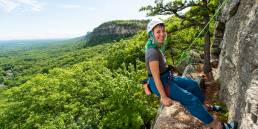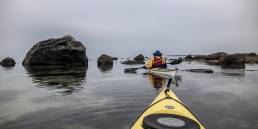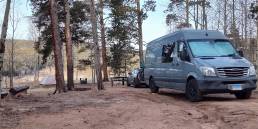To stand on Mount Washington’s summit in winter is to know the sheer cruelty of nature. The frozen landscape, biting cold, and ferocious wind all serve as a reminder that this is not a place for habitation. Yet, in the winter of 1870 and 1871, an expedition party of six—led by geologists Charles Hitchcock (New Hampshire’s state geologist) and Joshua Huntington (Huntington Ravine’s namesake)—spent the season here. In the process, they established the first high-mountain weather observatory in the United States and laid the groundwork for the Mount Washington Observatory. This winter marks the 150th anniversary of their feat.
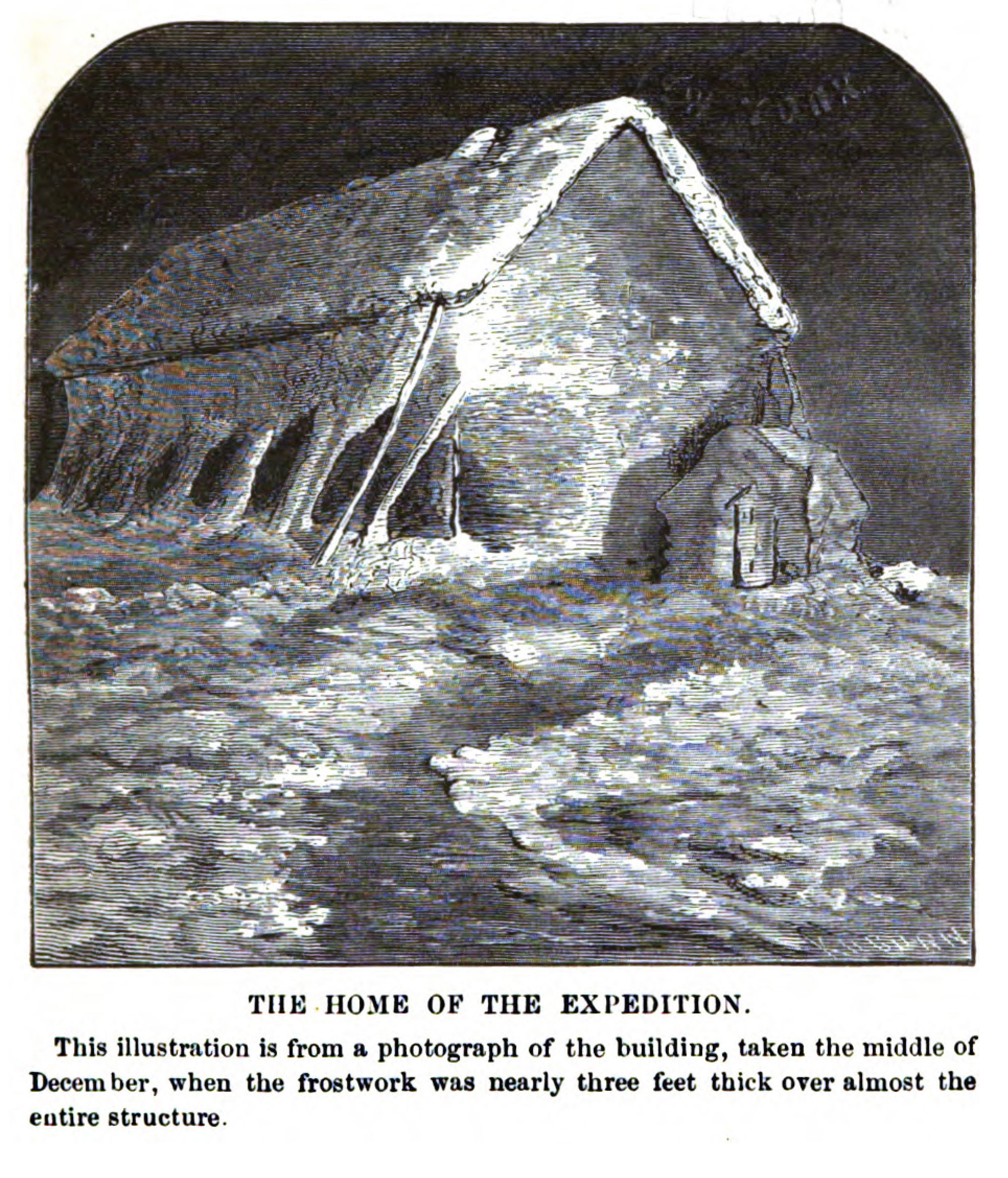
A Scientific Quest
According to the book, The Worst Weather on Earth: A History of the Mount Washington Observatory, “Hitchcock’s effort to establish a year-round, mountaintop meteorological observatory was the first sustained scientific operation of its type in the world.” However, the idea wasn’t entirely new; In 1853, one of the builders of the Mount Washington Carriage Road urged Congress to construct a full-time observatory on the summit of the mountain to monitor Washington’s unique weather conditions.
As far back as 1856, Huntington, then a college student, was contemplating spending a winter on Mount Washington, going so far as to write a letter to the Smithsonian in search of funds for an expedition. Hitchcock soon learned of Huntington’s plans, beginning a decade of correspondence between the two men as they looked to turn the dream into a reality.
But anyone who has stood on the summit of the Rockpile during the winter understands the audacity of Hitchcock’s and Huntington’s aspiration. This was especially true in 1870—at that point, the summit’s hotels, open since the 1850s, closed every winter because the weather conditions made supplying food and materials too challenging. Moreover, by 1870 there had been just two recorded successful winter ascents of the mountain and “failure was universally predicted” of the expedition. As Hitchcock later remarked in Mount Washington in Winter, Or The Experiences of a Scientific Expedition, “fear of accident has prevented most people from attempting to climb Mount Washington in winter.”

Telegraphing from the Top
While many doubted the expedition’s chances of success, it did pique the interest of the United States Signal Service, a precursor to the National Weather Service. To support the expedition, the Signal Service sent Hitchcock and Huntington instruments, three miles of insulated telegraph wire to run from the summit to the Cog Railway’s base station, and an experienced telegrapher and meteorologist named Sergeant Theodore Smith. With the support of the Signal Service, the expedition now had the means to send weather reports from the summit of the mountain down to the railroad’s base station. But they also needed a place to stay.
Originally, Hitchcock and Huntington had hoped to reside in Tip Top House, a hotel built on Washington’s summit in 1853. However, their request was denied on multiple occasions. Instead, they ended up in the summit depot of the fledgling Mount Washington Railway Company, which had just opened the Cog Railway one year before. In October 1870, some of the party, with the assistance of a local carpenter spent “several days…upon the summit in preparing the building for occupation,” partitioning a room, setting up a stove to heat it, and laying double-floors to insulate it. The room was about 20 feet long, 11 feet wide, and eight feet high, with “[e]very inch of space…utilized” once the party arrived.
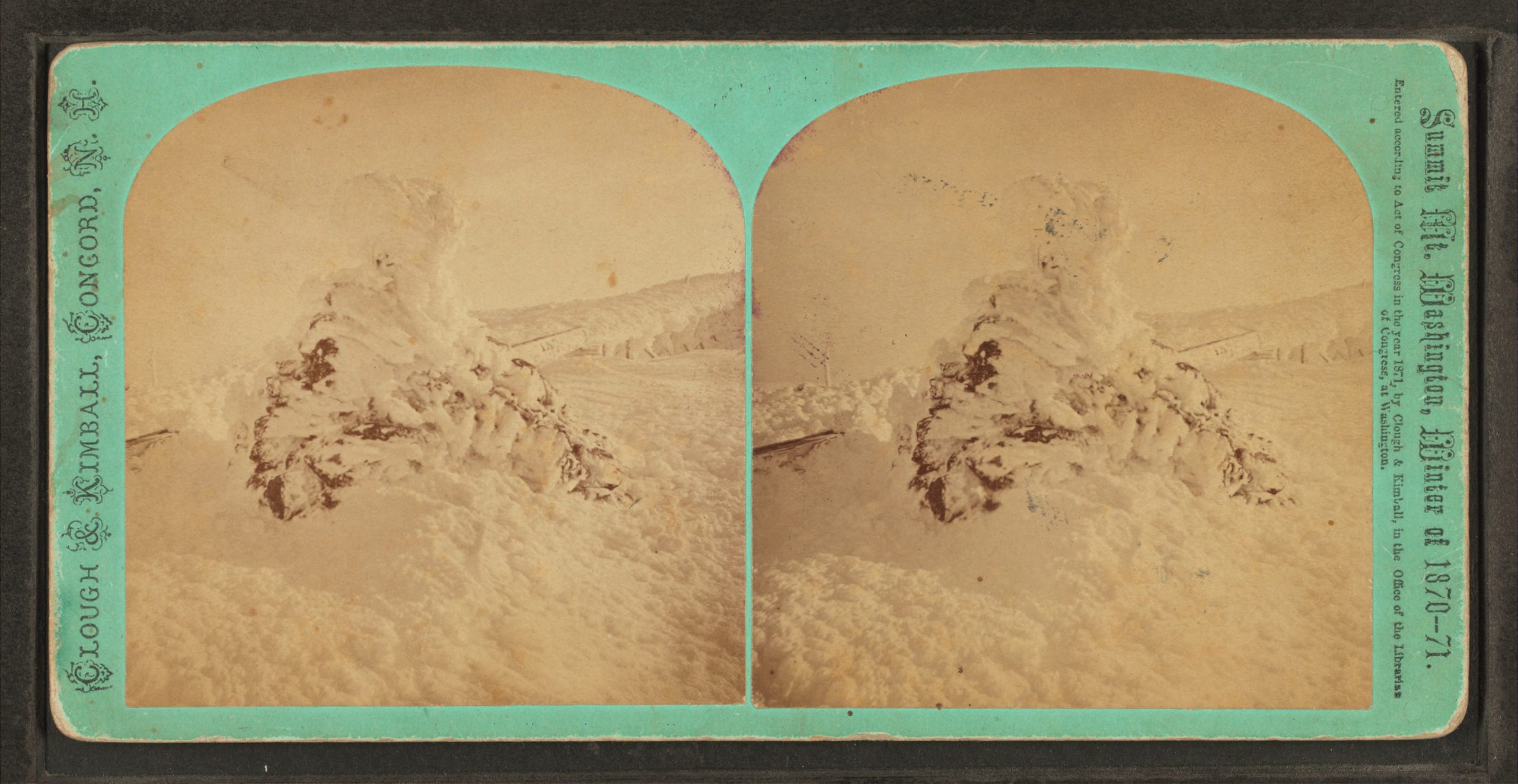
“An Excitement Found Nowhere Else”
Rounding out the six-member expedition party were observer S.A. Nelson and photographers A.F. Clough and Howard Kimball. Due to the parties’ various responsibilities, they all arrived on the mountain at different times. Huntington was the first—on November 12, 1870, he ascended to the summit and, the next day, recorded the expedition’s first weather observations. He remained there alone until November 30th, when Clough and Kimball arrived with two visitors. Smith arrived on December 4th. Hitchcock arrived on December 21st, the first day of winter.
Day-to-day life on the mountain offered “an excitement found nowhere else.” The party regularly observed “gorgeous” sunrises and “glorious” sunsets, “throwing a flood of light across a sea of clouds.” They also observed all the weather phenomena and fury the mountain had to offer, diligently recording their observations in their journals, then telegraphing them to the “lower regions.”
As noted in the book, Mount Washington: A Handbook for Travelers, “Full reports of the weather encountered were telegraphed daily, and the public interest in the enterprise was wide-spread and keen.” One notable measurement occurred on February 5, 1871, when they recorded a lowest temperature of minus 59°F. Using a hand-held anemometer, the peak wind gust they recorded that winter was 105 mph.
When not observing, the party spent time exploring the mountain, repairing their quarters, taking and developing photographs to give “those who cannot visit such places a chance to see the wonders and beauties,” receiving visitors, and mending the telegraph wire, a process that required traveling down the Cog to find the break, repairing the break, and then devising new ways to protect the wire from the elements. Some members also regularly returned to the valley floor for days at a time. Only Huntington, Nelson, and Smith spent every night that winter on the mountain.
After full days on the mountain, the group gathered around a stove which was “prized very highly on account of its marvelous heating properties.” There, they recorded their observations and wrote in their journals, the latter of which provide incredible insight into what life was like for the men.
Working in shifts over the course of the winter, their observations continued until May 12, 1871, when they departed the mountain.
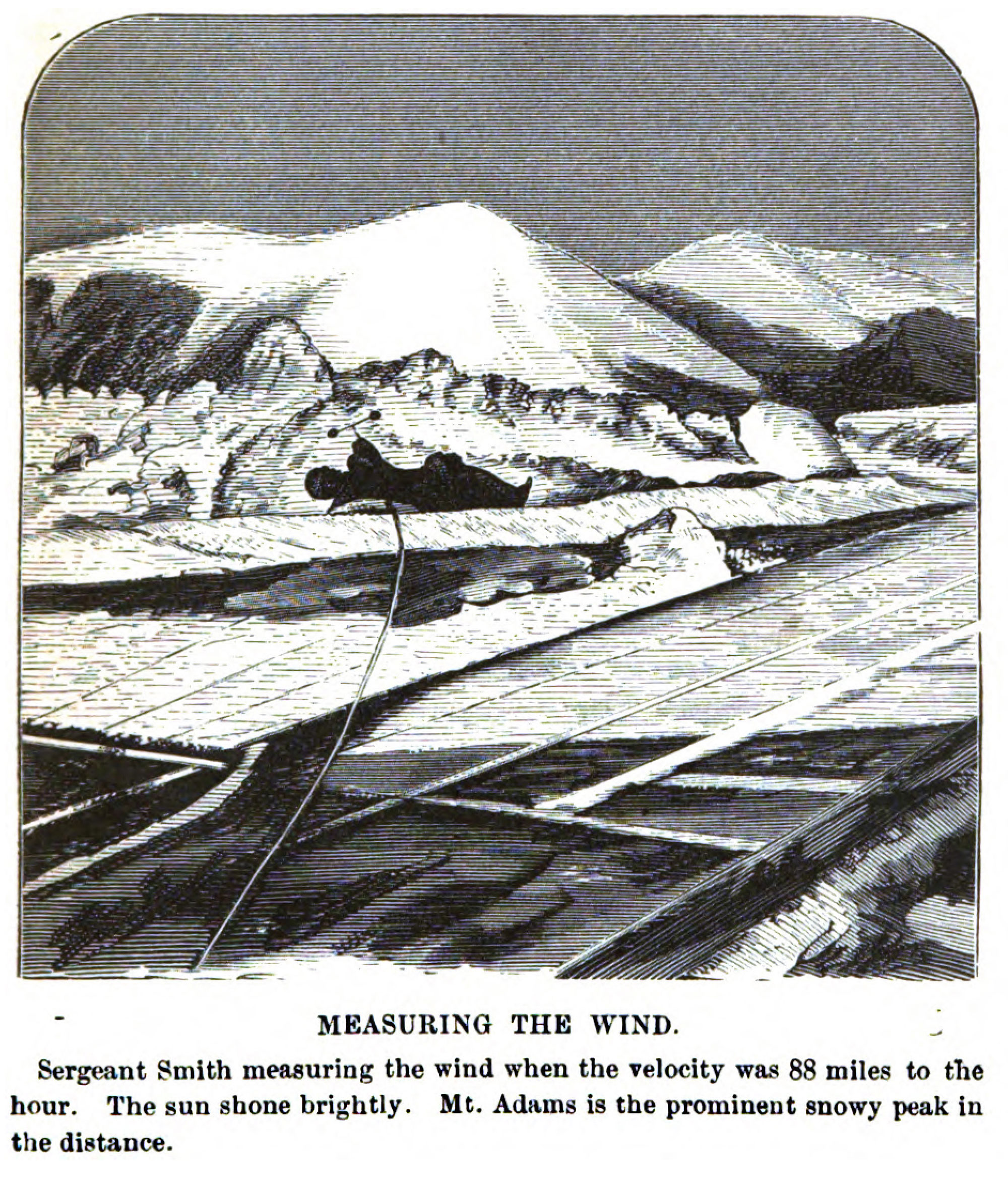
The Aftermath
The Signal Service continued conducting weather observations atop Mount Washington until 1892, making the summit station the first of its kind in the world. Forty years later, another audacious group—led by Charles Brooks, a professor of Meteorology at Harvard, and Joe Dodge, the legendary AMC high hut manager—would carry on the early work of the Signal Services and resume recording the weather at the top of New England, laying the foundation for the Mount Washington Observatory as we know it today.
Four men manned the next-generation mountaintop weather station—Bob Monahan, Sal Pagliuca, Alex McKenzie, and Joe Dodge—working without pay or time off, but not without reward. Just two years later, on April 12, 1934, the Observatory recorded the world’s fastest surface wind speed ever observed by man: 231 mph. It would be almost a half century until that wind speed was even close to being attained again on Mount Washington—the second-fastest wind record at the observatory was 182 mph in 1980.
Today
The Mountain Washington Observatory is now one of the several permanently staffed mountaintop weather stations in the world and its forecasts are critical to outdoor endeavors across the region. It even hosts visitors—in non-COVID times, the EMS Climbing School leads overnights at the MWOBS—providing a glimpse into what life was like at the top of New England for the six men who spent the winter of 1870-1871 there.
Tim Peck and Doug Martland
Tim and Doug met long ago at the Eastern Mountain Sports in Canton, Massachusetts. Bonding over a love of slick Quincy Quarry granite, White Mountain sufferfests, and scheming up adventures while folding tee-shirts, today Tim and Doug collaborate to write about their favorite outdoor activities and occasionally get nostalgic about tee-shirt tables.


